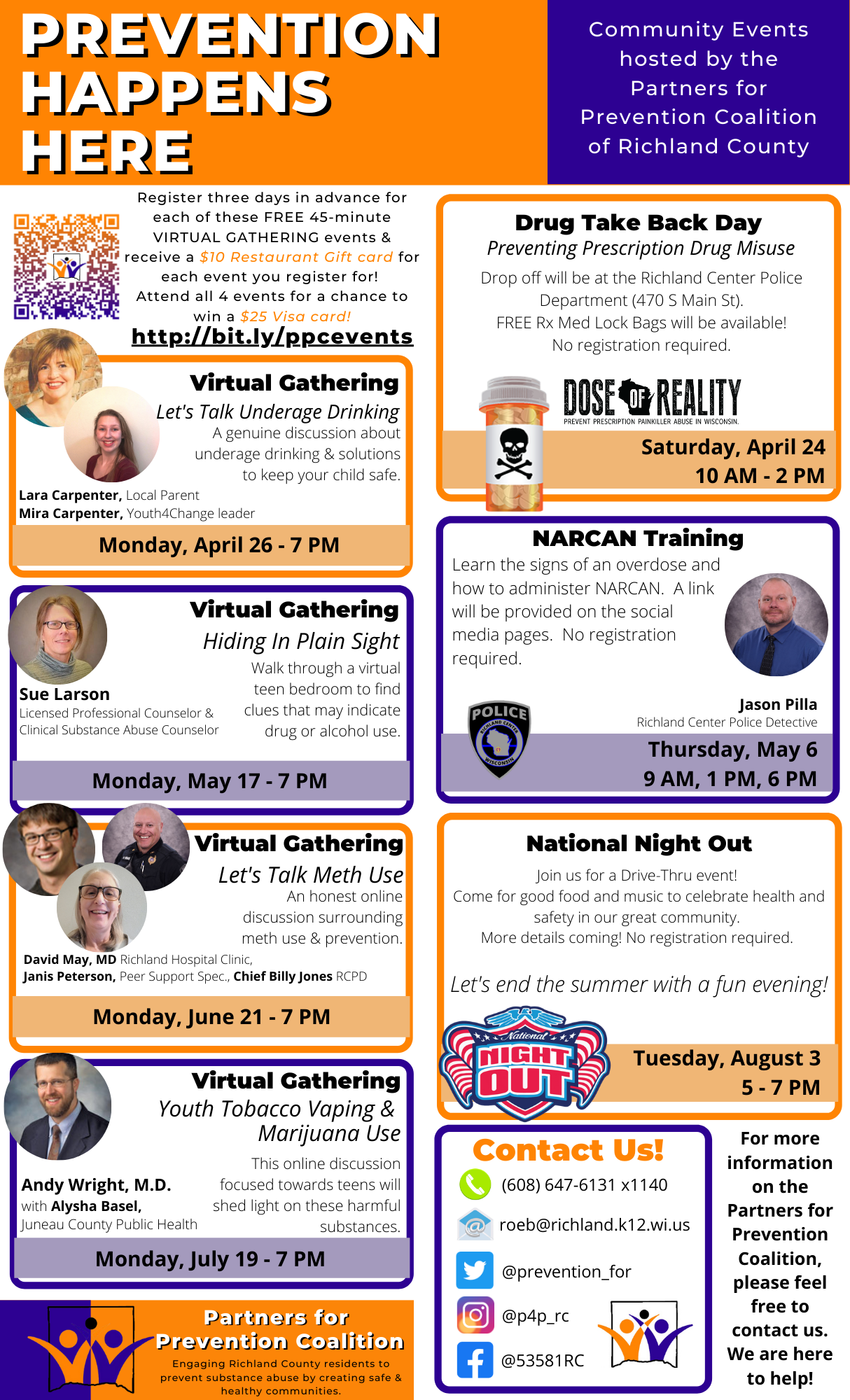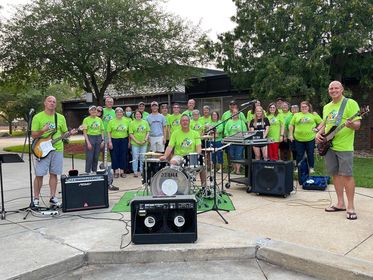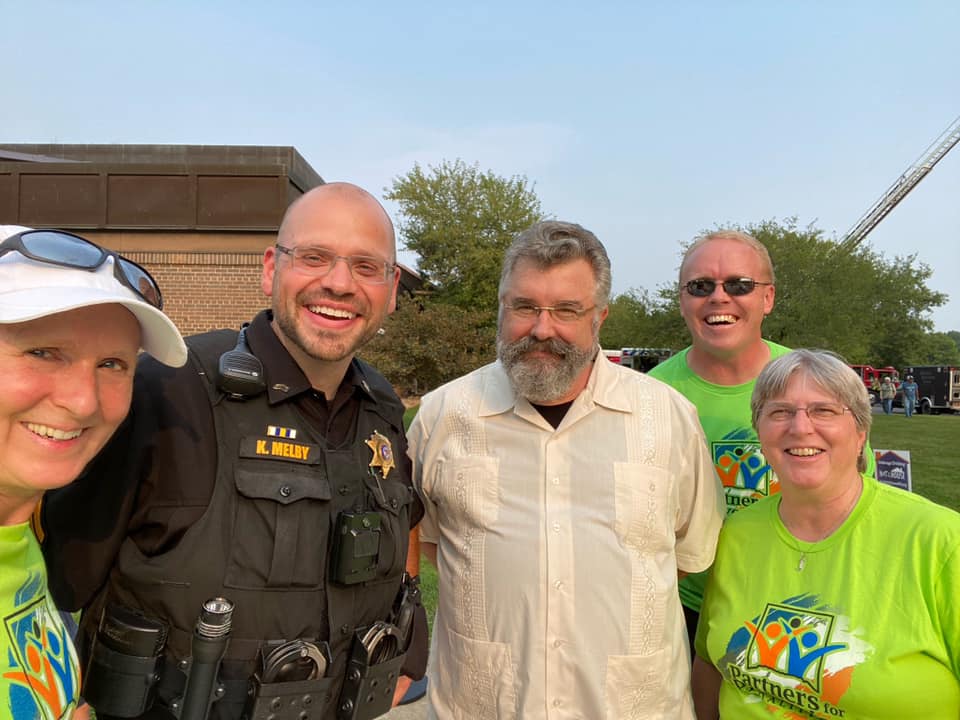|
Back to Success Stories
Let s Talk Underage Drinking (April 26th), Hidden in Plain Site (May 10th), and National Night Out (August 3rd)
Hosted by:
Partners for Prevention Coalition

Please briefly describe your Communities Talk activity.
We were able to host three community events with the Communities Talk stipend. The first two events were virtual gatherings on Zoom. On April 26, 2021, a mother/daughter team provided an overview of prevention basics focused on changing community-level risk factors, data, and current coalition strategies. The second virtual gathering, called “Hidden in Plain Site,” was created for parents and guardians. During this event, participants were led through a virtual teen bedroom, which highlighted items that could indicate drug and/or alcohol use. The third event was aimed at building community collaboration. It was a fun social event held outdoors with a local band, food, and a law enforcement display called “National Night Out.” It was the first time we held National Night Out in our community. Our coalition came dressed in emergent lime-green t-shirts. We handed out many materials and displayed “Not in My House” yard signs as part of our campaign to promote Wisconsin’s Social Host Law, and we talked to people during the two-hour event. It was filmed by a local videographer and posted on the local community TV channel. A total of 252 people attended the National Night Out.

How does alcohol and other drug misuse affect your community?

Our coalition is in its third year of a Drug-Free Communities grant. During the first year, we conducted an assessment to identify our problem statement, community risk factors, and local conditions. This has become our road map in planning the implementation of our prevention strategies, and our greatest concern is underage drinking. Data shows that within the last 30 days. 23% of our youth have used alcohol, and 35% reported drinking alcohol prior to age 13 (2019 WI YRBS). Our community risks include low parental perception of harm and alcohol availability. Local conditions include youth drinking at community events; youth drinking on private property with parental consent; adults drinking at family and youth sporting activities; and licensed liquor establishments failing to check identifications, which has resulted in youth purchases of alcohol.
In response to retail access, we have collaborated with other community partners to conduct three rounds of compliance checks. This is the first time in a long time that county law enforcement and a judicial committee signed a memorandum of understanding and approved a resolution that states they will partner with our coalition for biannual compliance checks. For private property drinking, we have partnered with Crime Stoppers to ensure reports of underage drinking can be made easily. We have also worked with law enforcement on a county resolution outlining how we can begin to enforce the Social Host Law.

What goal(s) did you hope to accomplish with your Communities Talk activity?
- Create an ongoing conversation about underage drinking and substance use prevention in the community
- Foster collaboration between community stakeholders for continued underage drinking and substance use prevention activities
- Create new resources/materials (e.g., publications, handouts, factsheets, videos, graphics) to support prevention of underage drinking and misuse of other substances
- Improve policy/legislation (e.g., reducing alcohol advertising to which youth are exposed; instituting, promoting, or increasing alcohol compliance checks; improving
- Awareness and enforcement of social host laws) to support prevention of underage drinking

What challenge(s) did you face in planning your activity this year?
- Lack of interest from the community
- Adapting to conducting a virtual activity
- Other challenges we faced in planning our activities this year were the lack of interest from the community, adaptation to a virtual alternative, and low attendance for two of our three events.

How did you overcome these challenges?
We overcame challenges by creating incentives, radio ads, and newspaper ads, and having volunteer recruitment.

What are your next steps?

- Create new action groups to tackle specific issues raised during our Communities Talk activity
- Expand our coalition with new partnerships in the community
- Support new prevention policies, legislation, or social ordinances
- Conduct research efforts to learn more about issues in our community
- Create a public education campaign to raise awareness and/or change behaviors around underage drinking (i.e., create PSAs and other promotional materials)

Which Communities Talk resources (or other SAMHSA resources) were most helpful for your activity?

- Prevention-related webinars
- Prevention videos, such as College Drinking: Prevention Perspectives
- StopAlcoholAbuse.gov website
- StopAlcoholAbuse.gov What’s New email newsletter
- Communities Talk website
- Communities Talk planning guides
- Communities Talk toolkits
- Communities Talk social media content (e.g., Facebook, Twitter)
- Communities Talk Find an Activity Map
- We often share the resources on our social media platforms.

Who did you involve in your activity planning, and who did your activity impact?
We had a coalition coordinator who was directly involved in the planning as well as a planning committee to support them.

Did the COVID-19 pandemic affect the planning or execution of your activities?
Yes. The pandemic made us provide a virtual alternative to two of our events: Hidden in Plain Sight and Let’s Talk Underage Drinking.
|
|